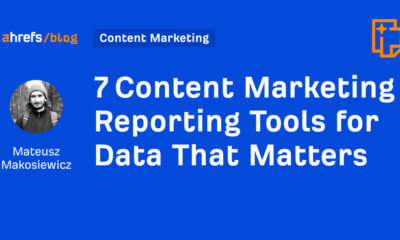SEARCHENGINES
Google Merchant Center Product Data Specification Updates For 2022

Annually, Google updates the Merchant Center product data specification and Google made some updates to it last night. Some updates went into place on April 27, 2022 and some go into place on June 26, 2022.
The last time Google updated the Merchant Center product data specification was in April 2021.
Here is a copy and paste of the changes listed:
Changes beginning immediately (April 27, 2022)
New attribute to pause ads: To help you manage how your products serve in ads, we’re introducing the pause [pause] attribute. This new attribute will allow you to quickly pause (and then restart) showing your products in Shopping ads. Previously, some merchants have used the availability [availability] attribute and set the value to “out_of_stock” (out of stock) in order to stop ads from showing. Beginning early 2023, you should use the pause [pause] attribute with a value of “ads” if you want to temporarily pause your ads. After this date, using the availability [availability] attribute with an incorrect value could lead to product disapprovals.
Learn more about the pause ads [pause] attribute.
Provide shipping country sub-attribute: When providing the shipping [shipping] attribute, you now need to provide the country [country] sub-attribute to ensure shipping prices are accurate. Item-level warnings (“Missing sub-attribute [country (sub-attribute of [shipping])]”) have already been issued in the Diagnostics page to help merchants identify affected products and will move to errors starting today.
Learn more about the shipping [shipping] attribute and how to show products in multiple countries of sale.
To ensure that your products continue to show and prevent possible disapprovals, please go to the Diagnostics page of your Merchant Center account to review the affected products and apply the necessary changes.
Updated guidance for unique product identifiers: Unique product identifiers (GTIN [gtin], brand [brand], MPN [mpn]) define the product you’re selling in the global marketplace. The following guidance will help you to use unique product identifiers correctly and accurately.
- If your products have assigned unique product identifiers and you have them available: Always include them to ensure best performance. If you have some identifiers available but not others, include what you have.
- If your products have assigned unique product identifiers, but you don’t have them available: Don’t include incorrect identifiers (for example, internal skus or other values specific to your store) or identifiers from similar products. If a product does have identifiers, don’t use the identifier exists
[identifier_exists]attribute with a value of “false” (false) or the product may be disapproved. - If your products don’t have assigned unique product identifiers: Don’t include the GTIN
[gtin], brand[brand], or MPN[mpn]attributes for the product. Also do not include internal skus or other values specific to your store in these attributes. Instead, include the identifier exists[identifier_exists]attribute with a value of “false” (false).
Changes beginning June 26, 2022
Include the availability date for backorder and preorder products: You can specify that your products are available on backorder or preorder when you use the availability [availability] attribute with values “backorder” or “preorder“. Starting June 26, you’ll need to provide the availability date [availability_date] attribute with a date up to a year in the future to specify when backorder or preorder products will become available otherwise your products may be disapproved.
Learn more about the availability [availability] and availability date [availability_date] attributes.
Automatic item updates for condition: To help you keep your product data correct we’re adding automatic item updates for condition. Beginning June 26, 2022, all accounts will be automatically opted-in to use automatic item updates for condition. If you choose to not use the feature, you can opt-out in Merchant Center through the Automatic Improvements setting, under item updates. If you opt-out, your products may be disapproved if they use an incorrect condition value.
Forum discussion at Twitter.
Source: www.seroundtable.com
SEARCHENGINES
Google Won’t Change The 301 Signals For Ranking & SEO

Gary Illyes from Google said on stage at the SERP conference last week that there is no way that Google would change how the 301 redirect signal works for SEO or search rankings. Gary added that it’s a very reliable signal.
Nikola Minkov quoted Gary Illyes as saying, “It is a very reliable signal, and there is no way we could change that signal,” when asked if a 301 redirect not working is a myth. Honestly, I am not sure the context of this question, as it is not clear from the post on X, but here it is:
More from @methode:
– 301 redirect not working is a myth. “It is a very reliable signal, and there is no way we could change that signal”.#SERPConf2024#SERPConf2024International— Nikola Minkov (@n_minkov) April 19, 2024
We’ve covered 301 redirects here countless times – but I never saw a myth that Google does not use 301 redirects as a signal for canonicalization or for passing signals from an old URL to the redirected URL.
Forum discussion at X.
Note: This was pre-written and scheduled to be posted today, I am currently offline for Passover.
SEARCHENGINES
Google Again Says Ignore Link Spam Especially To 404 Pages

I am not sure how many times Google has said that you do not need to disavow spammy links, that you can ignore link spam attacks and that links pointing to pages that 404/410 are links that do not count – but John Mueller from Google said it again.
In a thread on X, John Mueller from Google wrote, “if the links are going to URLs that 404 on your site, they’re already dropped.” “They do nothing,” he added, “If there’s no indexable destination URL, there’s no link.”
John then added, “I’d generally ignore link-spam, and definitely ignore link-spam to 404s.”
Asking if it would hurt to disavow, after responding with the messages above, John wrote:
It will do absolutely nothing. I would take the time to rework a holistic & forward-looking strategy for the site overall instead of working on incremental tweaks (other tweaks might do something, but you probably need real change, not tweaks).
Earlier this year we had tons of SEOs notice spammy links to 404 error pages, John said ignore them. In 2021, Google said links to 404 pages do not count, Google also said that in 2012 and many other times.
Plus, outside of links to 404 pages, Google has said to ignore spammy links, time and time again – even the toxic links – ignore them. The messaging around this changed in 2016 when Penguin 4.0 was released and Google began devaluing links over demoting them.
Here are those new posts in context:
I’d say add both. Lol
— Jeremy Rivera (@JeremyRiveraSEO) April 11, 2024
Sure. But also, save yourself the work completely :-).
— John 🧀 … 🧀 (@JohnMu) April 11, 2024
Re-reading your initial post – if the links are going to URLs that 404 on your site, they’re already dropped. They do nothing. If there’s no indexable destination URL, there’s no link. I’d generally ignore link-spam, and definitely ignore link-spam to 404s.
— John 🧀 … 🧀 (@JohnMu) April 11, 2024
… but still… is this a dumb idea?
— Rebekah Edwards (@rebekah_creates) April 11, 2024
It will do absolutely nothing. I would take the time to rework a holistic & forward-looking strategy for the site overall instead of working on incremental tweaks (other tweaks might do something, but you probably need real change, not tweaks).
— John 🧀 … 🧀 (@JohnMu) April 11, 2024
And in general, Google says it ignores spammy links, so you should too (not new) but this post from John Mueller is:
I would just ignore them, Google ignores them too. Sometimes they’re just more visible in tools, but that doesn’t mean they’re a problem.
— John 🧀 … 🧀 (@JohnMu) April 18, 2024
And then also on Mastodon wrote about a similar situation, “Google has 2 decades of practice of ignoring spammy links. There’s no need to do anything for those links.”
Forum discussion at X.
Note: This was pre-written and scheduled to be posted today, I am currently offline for Passover.
SEARCHENGINES
Google Needs Very Few Links To Rank Pages; Links Are Less Important

Gary Illyes from Google spoke at the SERP Conf on Friday and he said what he said numerous times before, that Google values links a lot less today than it did in the past. He added that Google Search “needs very few links to rank pages.”
Gary reportedly said, “We need very few links to rank pages… Over the years we’ve made links less important.”
I am quoting Patrick Stox who is quoting what he heard Gary say on stage at the event. Here is Patrick’s post where Gary did a rare reply:
I shouldn’t have said that… I definitely shouldn’t have said that
— Gary 鯨理/경리 Illyes (so official, trust me) (@methode) April 19, 2024
Gary said this a year ago, also in 2022 and other times as well. We previously covered that Google said links would likely become even less important in the future. And even Matt Cutts, the former Googler, said something similar about eight years ago and the truth is, links are weighted a lot less than it was eight years ago and that trend continues. A couple of years ago, Google said links are not the most important Google search ranking factor.
Of course, many SEOs think Google lies about this.
Judith Lewis interviewed Gary Illyes at the SERP Conf this past Friday.
-

 PPC5 days ago
PPC5 days ago19 Best SEO Tools in 2024 (For Every Use Case)
-
SEARCHENGINES7 days ago
Daily Search Forum Recap: April 17, 2024
-
SEARCHENGINES6 days ago
Daily Search Forum Recap: April 18, 2024
-
SEARCHENGINES5 days ago
Daily Search Forum Recap: April 19, 2024
-

 MARKETING6 days ago
MARKETING6 days agoEcommerce evolution: Blurring the lines between B2B and B2C
-

 SEO6 days ago
SEO6 days ago2024 WordPress Vulnerability Report Shows Errors Sites Keep Making
-

 WORDPRESS5 days ago
WORDPRESS5 days agoHow to Make $5000 of Passive Income Every Month in WordPress
-

 WORDPRESS6 days ago
WORDPRESS6 days ago10 Amazing WordPress Design Resouces – WordPress.com News















You must be logged in to post a comment Login